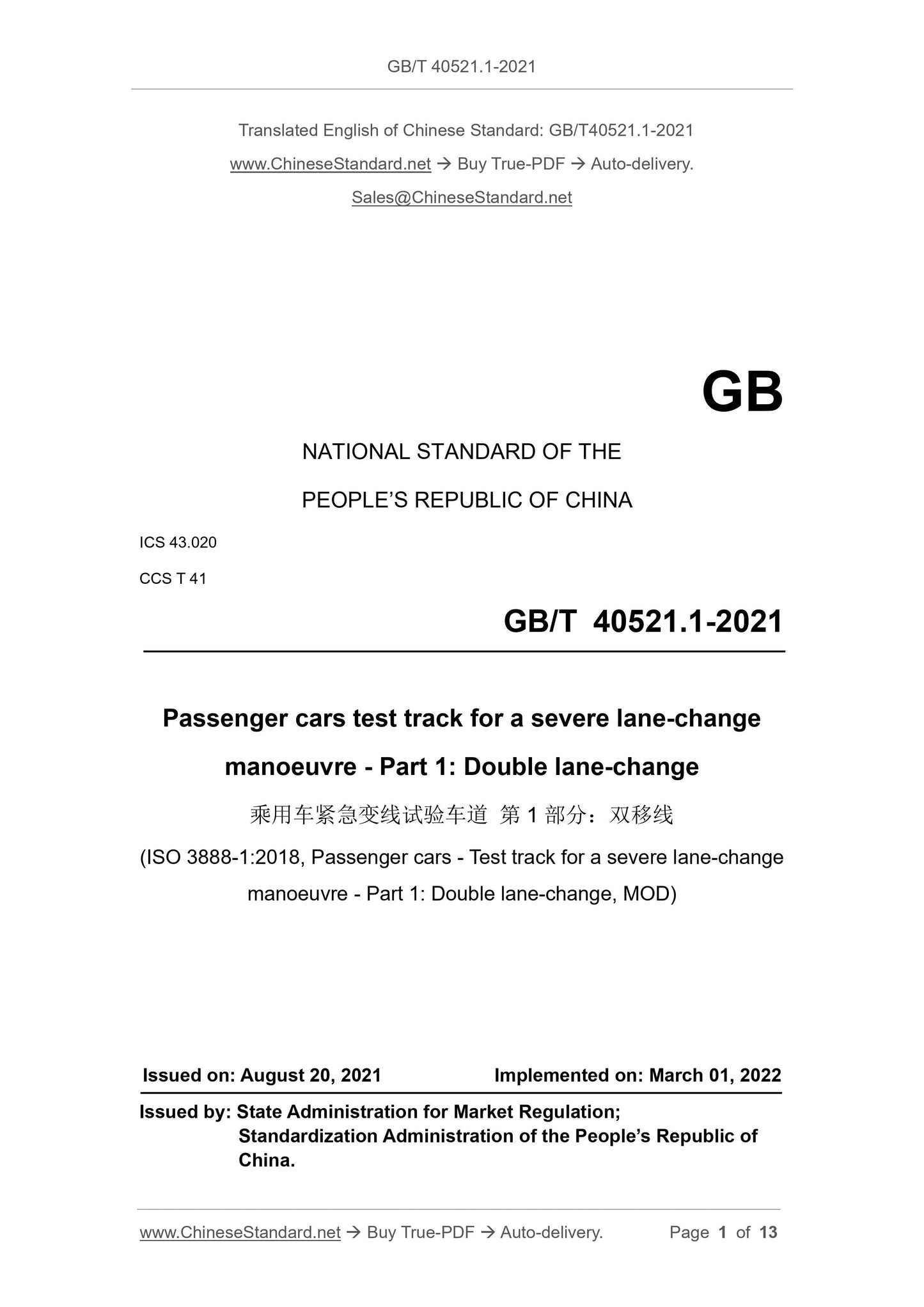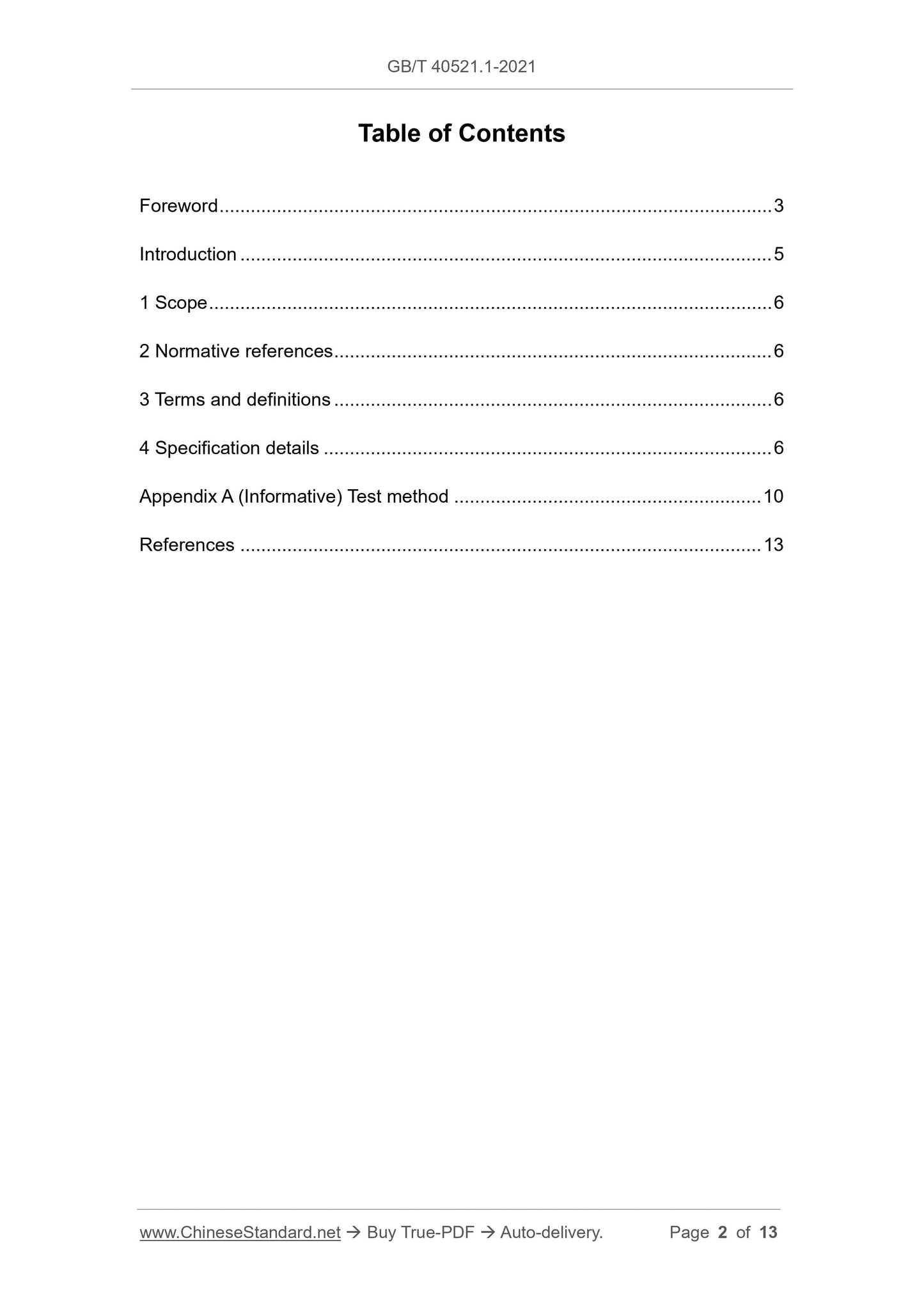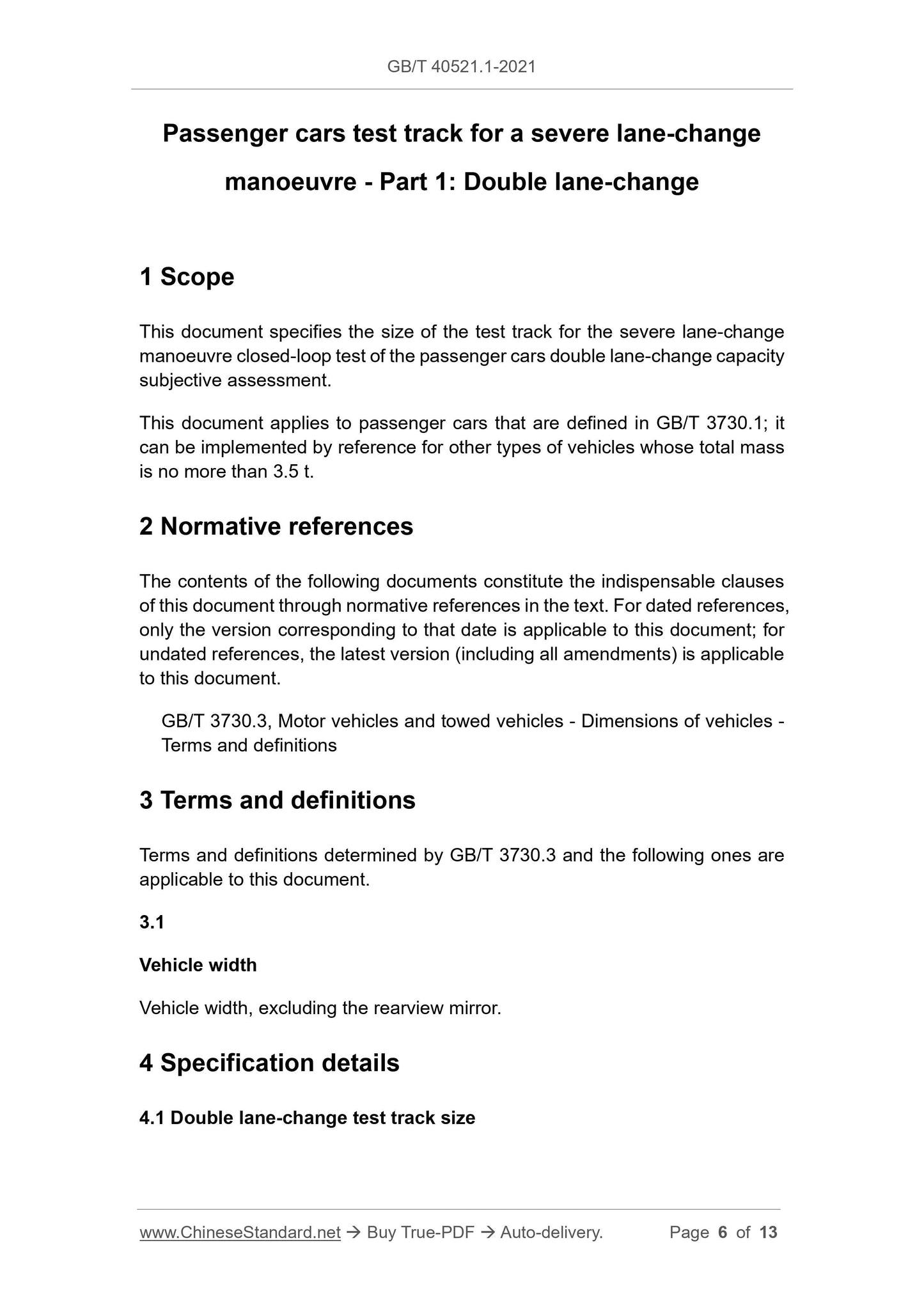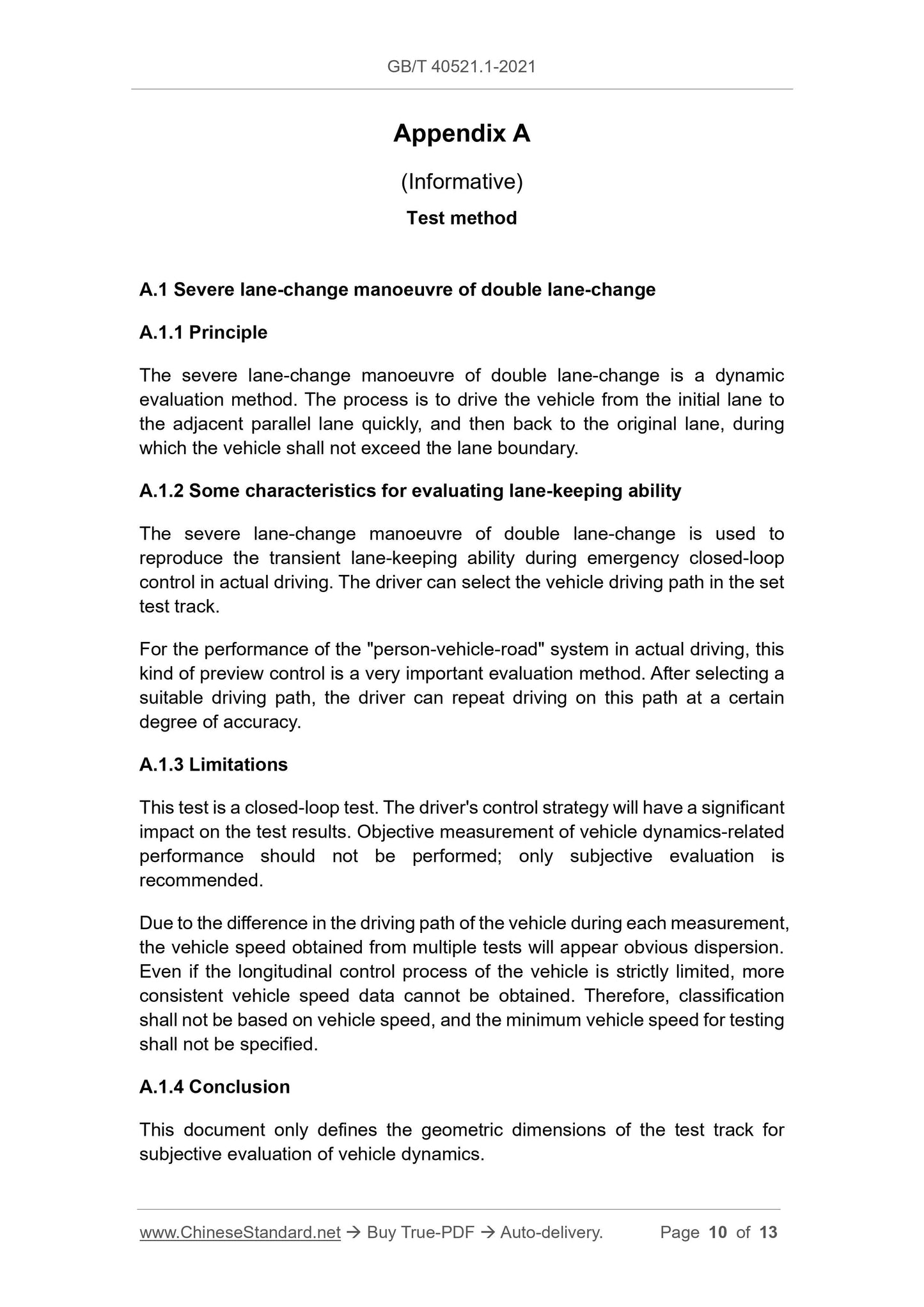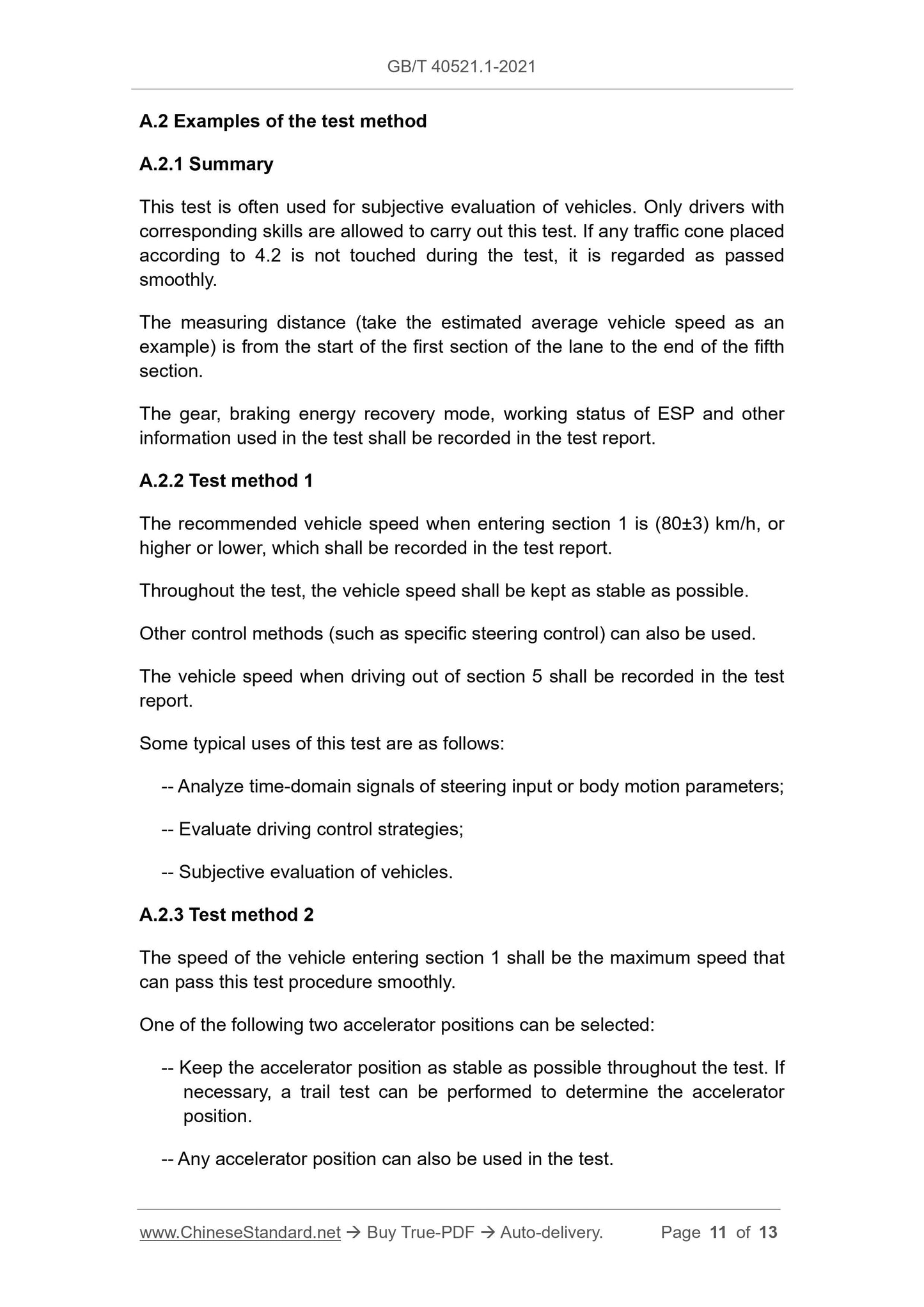1
/
of
5
www.ChineseStandard.us -- Field Test Asia Pte. Ltd.
GB/T 40521.1-2021 English PDF (GB/T40521.1-2021)
GB/T 40521.1-2021 English PDF (GB/T40521.1-2021)
Regular price
$170.00
Regular price
Sale price
$170.00
Unit price
/
per
Shipping calculated at checkout.
Couldn't load pickup availability
GB/T 40521.1-2021: Passenger cars test track for a severe lane-change manoeuvre - Part 1: Double lane-change
Delivery: 9 seconds. Download (and Email) true-PDF + Invoice.Get Quotation: Click GB/T 40521.1-2021 (Self-service in 1-minute)
Newer / historical versions: GB/T 40521.1-2021
Preview True-PDF
Scope
This document specifies the size of the test track for the severe lane-changemanoeuvre closed-loop test of the passenger cars double lane-change capacity
subjective assessment.
This document applies to passenger cars that are defined in GB/T 3730.1; it
can be implemented by reference for other types of vehicles whose total mass
is no more than 3.5 t.
Basic Data
| Standard ID | GB/T 40521.1-2021 (GB/T40521.1-2021) |
| Description (Translated English) | Passenger cars test track for a severe lane-change manoeuvre - Part 1: Double lane-change |
| Sector / Industry | National Standard (Recommended) |
| Classification of Chinese Standard | T41 |
| Word Count Estimation | 10,119 |
| Issuing agency(ies) | State Administration for Market Regulation, China National Standardization Administration |
Share
